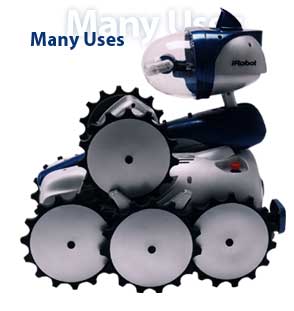NEC: R100 Personal Robot
The R100 can remember faces, understand spoken commands and respond verbally.
Sees
With a pair of video-camera eyes, the robot can avoid objects while moving around the home. It can measure distances and recognize the people that it meets.
Hears
The R100 has directional hearing. It will turn and look in the direction of the person who calls it. It will also understand and respond appropriately to a variety of spoken commands.
Talks
The robot can greet you by name and respond when you speak to it. It will also announce incoming e-mail messages.
Walks
The robot navigates around obstacles, while roaming through the house. Equipped with six ultra-sonic sensors, it stops instantly when something is very close or approaches suddenly from any direction.
Feels
If you tap, stroke or press the robot’s head, a built-in sensor accurately gauges the quality of your touch.
Senses the environment
The robot has built-in sensors that measure temperature and ambient light.
External PC for voice and image recognition processing
The robot recognizes images and voices by means of functions off-loaded to a personal computer.
Software
The robot is designed around software modules that can be easily expanded or enhanced. The module, software-based approach makes it easy to modify or add to the functions of sensors and the varieties of movement.


